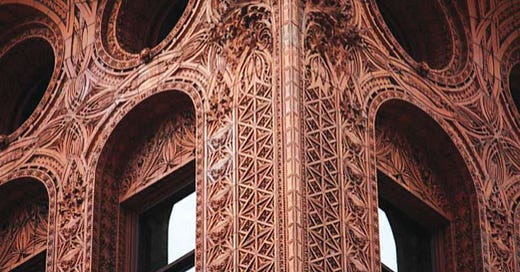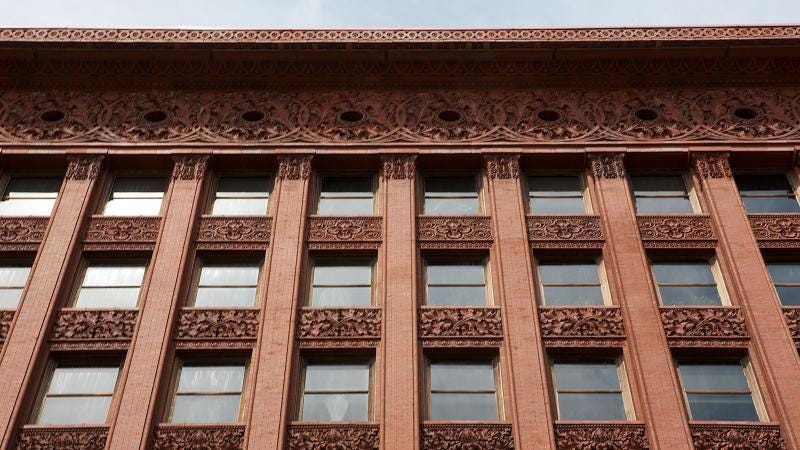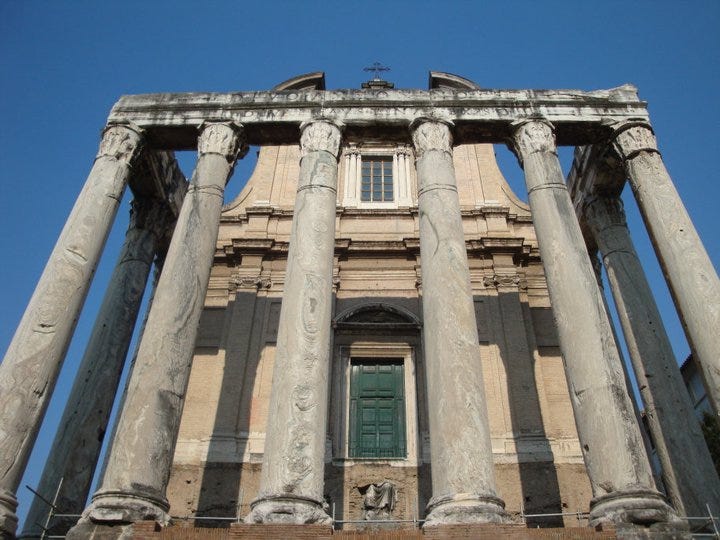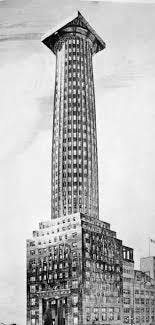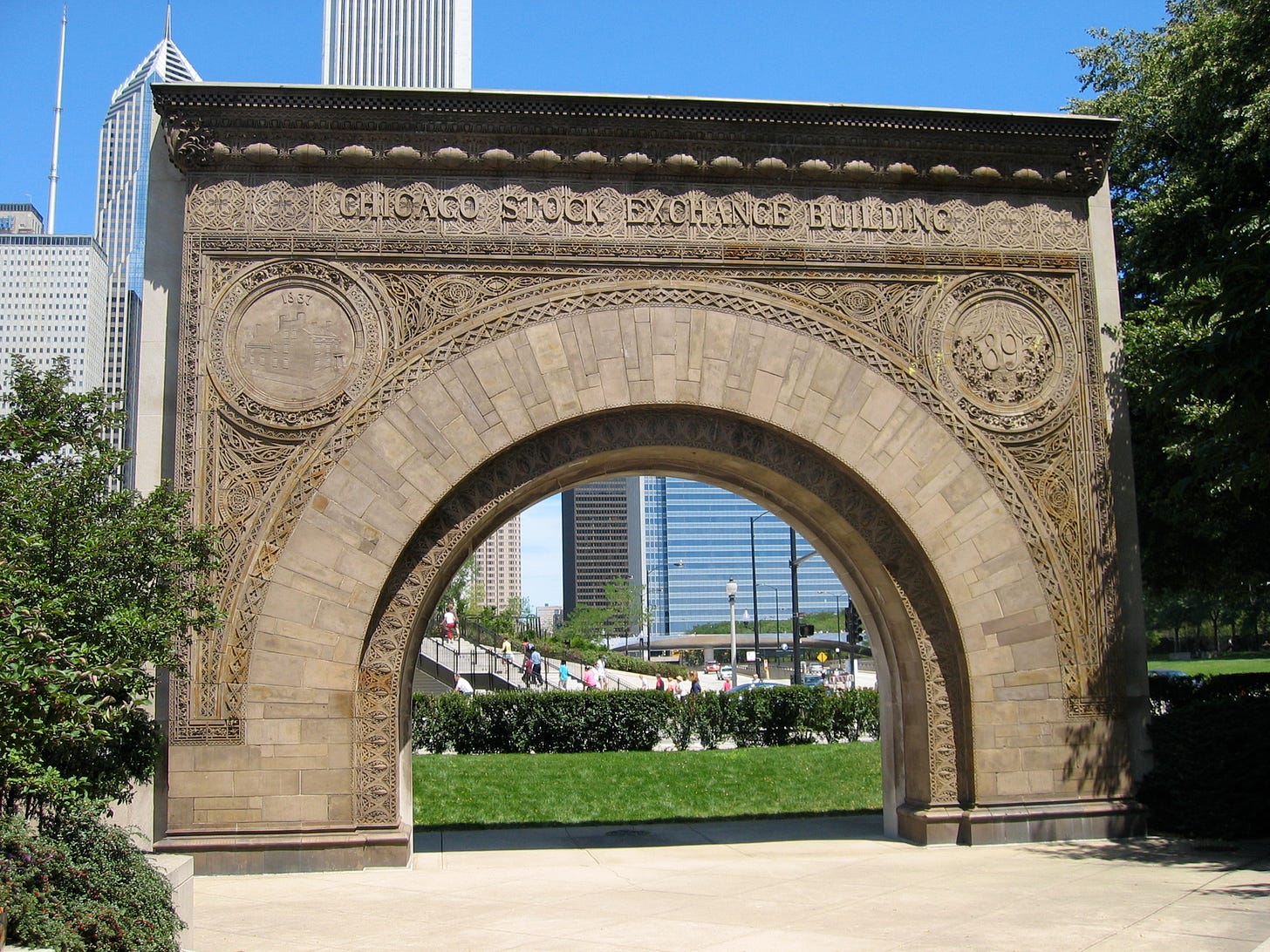Architectural Movements of Yesteryear 4: Louis Sullivan.
Throughout the history of architecture, there are a number of architects that don’t really fit into a specific movement. Usually movements happen due to a number of architects adopting a style from a single mentor (i.e. Usonian) or a group of people banding together in order to push a new aesthetic (i.e. Prairie School). A few examples of this might be Louis Kahn, Antoni Gaudi, and the architect that I am writing about today, Louis Sullivan.
Following the Great Chicago Fire, Sullivan moved to Chicago at the age of 17 to make a name for himself during the rebuilding. This coincided with the use of steel in building, making skyscrapers a new invention. Inspired by elements of the Arts and Crafts movement, Sullivan would extravagantly adorn the facades in “organic” ornament. Deeply inspired by nature, Sullivan would bury leaves, branches, and other forms inspired by all sorts of plants and shrubberies in the facades of the new building type. His buildings were so beloved that he became known as the “Father of Skyscrapers.”
You might be asking “well why doesn’t he fall into Arts and Crafts, you said he was inspired by them and it sounds awfully similar in idea”. Well, you see, Sullivan was heavily inspired by Classical Architecture (arts and crafts rejected the use of Classical Architectural styles), but did not like the way the ideas were used in Revivalism. His most famous idiom “Form Follows Function” he attributed to Vitruvius, the ancient Roman architect and author. Vitruvius had three principles for good architecture: firmitas (durability), utilitas (function/utility), venustas (beauty). Sullivan summed it up as “Form Follows Function”, as to why he didn’t make the statement more foolproof is anyone’s guess. It has since become the most misused quote in all of architecture, but there it is. Hilariously, this quote was adopted by the international movement, which despised ornament (the quality most beloved in Sullivan buildings and is why he’s not part of that movement either).
Why was he called the “Father of Skyscrapers”? Weren’t there a bunch of architects at the time all developing skyscrapers at the time? Yes… BUT at the time other skyscrapers were often extruded masses and did not follow the typical skyscraper vernacular that was adopted in the following century.
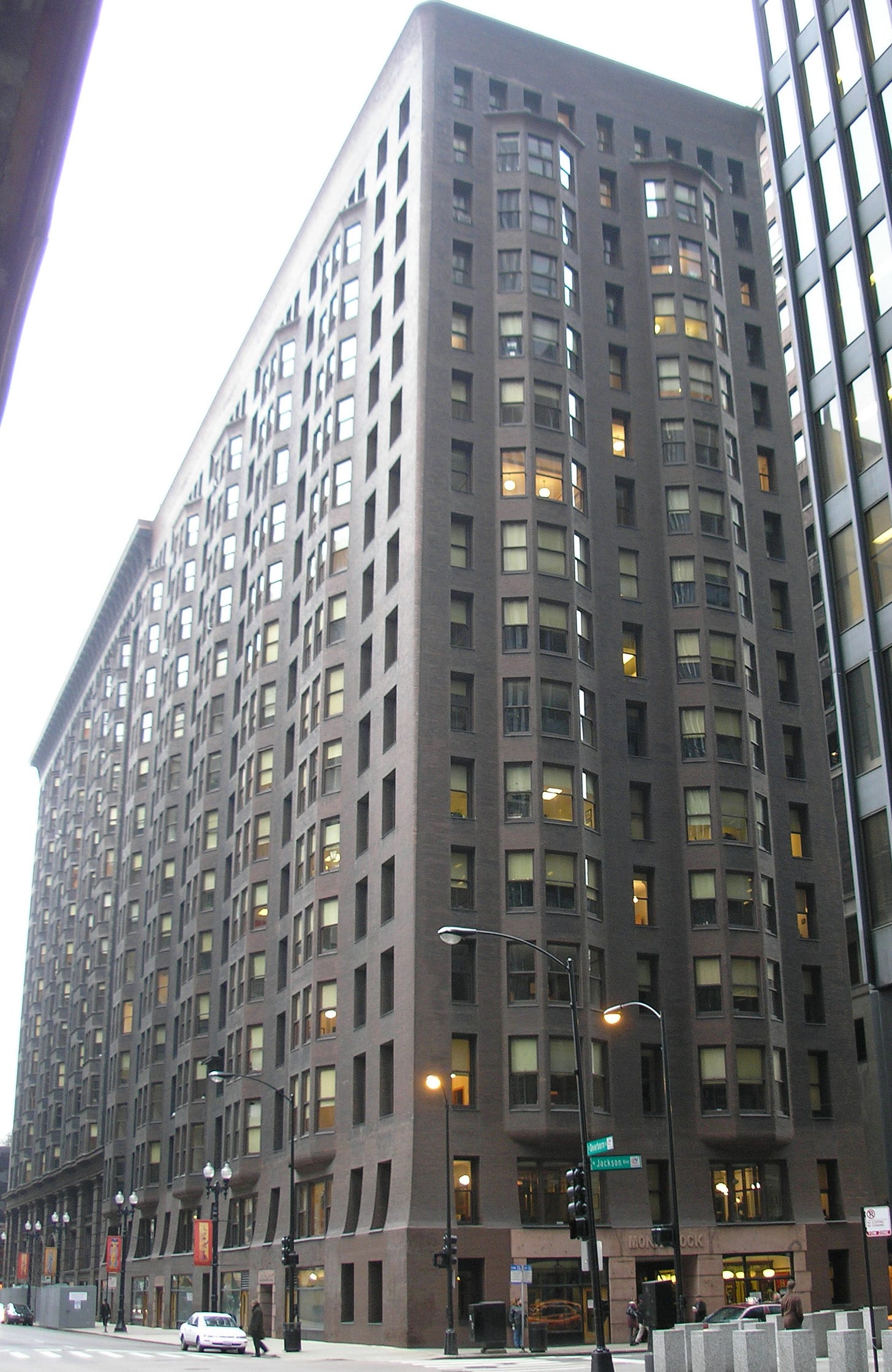
Sullivan believed that skyscrapers, a vertically oriented design, should follow the same vernacular used on vertical elements from antiquity. Columns. There should be a pedistal, a shaft, and a capital.
Adolf Loos, the eternal jackass that he is, mocked this idea (at one point or another he mocked everything Louis Sullivan ever used in his designs) by designing a literal column for the Chicago Tribune competition.
This is not the only reason that Louis Sullivan is considered one of the most influential architects in American History. He mentored a young architect named Frank Lloyd Wright. Wright would rarely express what his influences were, opting instead to pretend that his ideas were inventions of a genius the likes no one has seen before (I’ll get to Wright at some point, but imagine Kanye’s ego and expand it ten-fold). Wright did, however, work under Louis Sullivan and referred to him as “Lieber Meister” or “Beloved Master” in English, so it’s pretty hard to believe that no ideas made their way through Wright’s dense nature. Sullivan believed that “organic” ornamentation is one of the only ways to express a building’s true nature. It isn’t a stretch to believe that Wright’s idea about “organic architecture” is an altered version of this idea.
I want to end on a bit of a sad note. Sullivan buildings, despite being beloved buildings and fewer than 150 years old, have been demolished or destroyed at an alarming rate. If you look at his wikipedia page it has a list of standing buildings and lost buildings. Nearly 30% of the listed works are gone, whether by planned destruction or disaster. I don’t think that every building more than 50 years old needs to be protected, but the works by Sullivan are clearly deserving of existence. This is all that remains of the Chicago Stock Exchange Building that Sullivan designed.
Go see these buildings before it’s too late. The experience is worthy of your time.
“Architectural Movements of Yesteryear” is a series that explores the history of architectural movements preceding, including, and following the Modern Architectural Movement. My background for these posts will draw from my time in Architecture School (mostly Architecture History III at Kent State) and books/articles I have read since. I both attended the class as a student and as a teaching assistant for Architecture History III. Neither of these experiences make me an expert on any of these topics, but I do believe that it gives me enough information to create a blog post for public consumption and general understanding of these styles.

